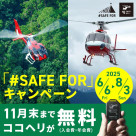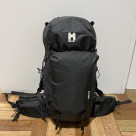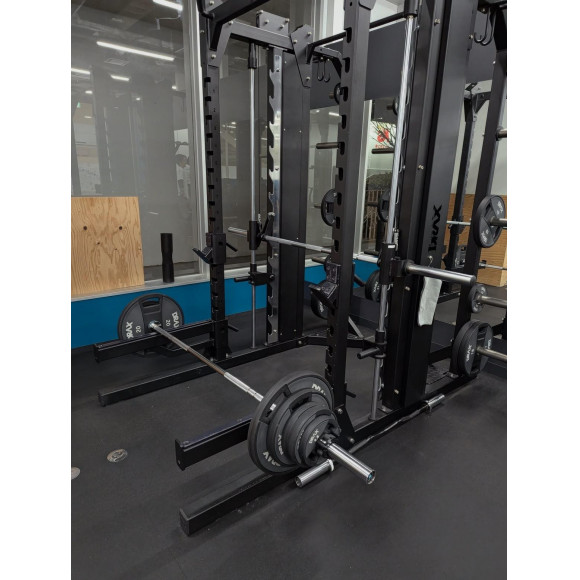
4F
koujitusannsou
Mountaineering and Training
2025.02.12
Hello. This is the staff of Chofu Parco.
(Image is an image)
If you have started climbing or are about to start from now on, may you be worried if your physical strength is okay? Also, I think that some people are busy and can't go to the mountains very much, and are worried about losing their physical strength.
For such people, I would like to recommend training that you can do at home, but I wonder if there is a question, "Do you need muscle training to climb in the first place?" And among climbers, opinions are divided.
So, this time, I would like to talk about my personal views and what to do.
First of all, it is from the conclusion that muscle training is necessary for climbing, but I think that it is better to do muscle training, but it is not necessary for some people.
For those who don't think they don't have to.
・A person who can walk 6 to 8 hours in the mountains at 5 to 7 a week
・A person who wears a 20kg Zack, wears a 10kg pair of shoes and walks for 2 hours a day
・A person who can walk through the Himalayas with his own training method
I don't think the above should be especially careful. The muscles necessary for climbing are the most developed by climbing. If you are walking in the Himalayas, I think you have your own training method, so you can do that training. In addition, if you walk with heavy luggage or shoes, you do aerobic exercise at a higher strength and higher weight than mountain climbing, you do not need any muscle training.
However, I don't think there are few people like the above, and I don't think such people have read this sentence itself, so basically I think it's better to do it.
In that case, it will be what kind of training and how much should be done, but the parts that should be trained are the following parts. Among them, the most important part was the deficit.
・Back (large back muscle, spine spiral muscles, monks)
・Lower body (quadriceps, buttocks, hamstrings, fibula abdominal muscles)
・Hips, abdomen (intestinal hips, abdominal diagonal muscles, abdominal muscles)
・Lung activity, endurance (aerobic exercise)
First of all, on the back, it is a part that should be trained to support the zack, stabilize the trunk, and balance. Also, in the Northern Alps, etc., it is necessary to grasp the rock and raise or stabilize the body.
Although it is not necessary to say about the lower body, it is better to train the thighs and hips around them because they require muscle strength when climbing steps. It is better to train calves as well, but I think it's good to train them as assistants for other training.
It is around the waist and stomach, but it is not necessary to target because it can be trained by doing other events, but the intestinal hip muscles involved in raising the feet are muscles that connect the upper body and the lower body, so it is essential to train It is a muscle.
Regarding lung activity and endurance, I would like to explain it further, so I will omit it.
Of course, it is better to train other muscles, but since the priority is lower than the above muscles, let's start with training around here first. Below is a list of typical trainings to train the muscles mentioned above. We will focus on events that can be done on our own weight. I hope you can see the method at YOUTUBE etc. or come to ask the staff. The inside of () is not your own weight, but it is more effective training if you need equipment or have equipment, so we recommend doing it at the gym.
・Spinal spiral muscles → Hiplift, plank (dead lift, narrow grip hanging)
・Lower body, intestinal hip muscles → Full squat, lange, Bulgarian squat (hip thrust)
・Aerobic exercise → HIIT (running)
The above training is only basic training, but it is the best training to train the muscles you need. I would like to have it for the first time from 3 sets 10 times, but if you can not do it, you can use 10 times 1 set, so please continue by all means. Your body will change and it will be easier to walk when climbing. Gradually increase your strength.
Some people may worry about getting too much muscle when training, getting heavy weight, or getting mukinki. Please be assured. I can't. I think it is impossible for me personally to increase muscle enlargement while climbing with self-weight training. In addition, it is said that women cannot achieve visible muscle enlargement by self-weight training. Please train with confidence.
Regarding training, since videos cannot be posted on the blog, we will post stories and reel videos on the Instagram of the store in the future, so please follow us by all means.
In addition, muscle training has an anti-aging effect. If you explain it in detail, it will be like a paper, so if you summarize it, muscle training promotes secretion of growth hormone, so blood circulation and skin will be healthy. That's right. In addition, since basal metabolism increases, it becomes easier to lose weight.
Last but not least, I think it is useful not only for mountain climbing but also for exercise habits in life. Why don't you exercise little by little, even if it's not for climbing? In koujitusannsou, we are promoting not only mountain climbing but also extending healthy life expectancy. We also offer consultation on mountain climbing training at all koujitusannsou stores, so please consult us.
(Image is an image)
If you have started climbing or are about to start from now on, may you be worried if your physical strength is okay? Also, I think that some people are busy and can't go to the mountains very much, and are worried about losing their physical strength.
For such people, I would like to recommend training that you can do at home, but I wonder if there is a question, "Do you need muscle training to climb in the first place?" And among climbers, opinions are divided.
So, this time, I would like to talk about my personal views and what to do.
First of all, it is from the conclusion that muscle training is necessary for climbing, but I think that it is better to do muscle training, but it is not necessary for some people.
For those who don't think they don't have to.
・A person who can walk 6 to 8 hours in the mountains at 5 to 7 a week
・A person who wears a 20kg Zack, wears a 10kg pair of shoes and walks for 2 hours a day
・A person who can walk through the Himalayas with his own training method
I don't think the above should be especially careful. The muscles necessary for climbing are the most developed by climbing. If you are walking in the Himalayas, I think you have your own training method, so you can do that training. In addition, if you walk with heavy luggage or shoes, you do aerobic exercise at a higher strength and higher weight than mountain climbing, you do not need any muscle training.
However, I don't think there are few people like the above, and I don't think such people have read this sentence itself, so basically I think it's better to do it.
In that case, it will be what kind of training and how much should be done, but the parts that should be trained are the following parts. Among them, the most important part was the deficit.
・Back (large back muscle, spine spiral muscles, monks)
・Lower body (quadriceps, buttocks, hamstrings, fibula abdominal muscles)
・Hips, abdomen (intestinal hips, abdominal diagonal muscles, abdominal muscles)
・Lung activity, endurance (aerobic exercise)
First of all, on the back, it is a part that should be trained to support the zack, stabilize the trunk, and balance. Also, in the Northern Alps, etc., it is necessary to grasp the rock and raise or stabilize the body.
Although it is not necessary to say about the lower body, it is better to train the thighs and hips around them because they require muscle strength when climbing steps. It is better to train calves as well, but I think it's good to train them as assistants for other training.
It is around the waist and stomach, but it is not necessary to target because it can be trained by doing other events, but the intestinal hip muscles involved in raising the feet are muscles that connect the upper body and the lower body, so it is essential to train It is a muscle.
Regarding lung activity and endurance, I would like to explain it further, so I will omit it.
Of course, it is better to train other muscles, but since the priority is lower than the above muscles, let's start with training around here first. Below is a list of typical trainings to train the muscles mentioned above. We will focus on events that can be done on our own weight. I hope you can see the method at YOUTUBE etc. or come to ask the staff. The inside of () is not your own weight, but it is more effective training if you need equipment or have equipment, so we recommend doing it at the gym.
・Spinal spiral muscles → Hiplift, plank (dead lift, narrow grip hanging)
・Lower body, intestinal hip muscles → Full squat, lange, Bulgarian squat (hip thrust)
・Aerobic exercise → HIIT (running)
The above training is only basic training, but it is the best training to train the muscles you need. I would like to have it for the first time from 3 sets 10 times, but if you can not do it, you can use 10 times 1 set, so please continue by all means. Your body will change and it will be easier to walk when climbing. Gradually increase your strength.
Some people may worry about getting too much muscle when training, getting heavy weight, or getting mukinki. Please be assured. I can't. I think it is impossible for me personally to increase muscle enlargement while climbing with self-weight training. In addition, it is said that women cannot achieve visible muscle enlargement by self-weight training. Please train with confidence.
Regarding training, since videos cannot be posted on the blog, we will post stories and reel videos on the Instagram of the store in the future, so please follow us by all means.
In addition, muscle training has an anti-aging effect. If you explain it in detail, it will be like a paper, so if you summarize it, muscle training promotes secretion of growth hormone, so blood circulation and skin will be healthy. That's right. In addition, since basal metabolism increases, it becomes easier to lose weight.
Last but not least, I think it is useful not only for mountain climbing but also for exercise habits in life. Why don't you exercise little by little, even if it's not for climbing? In koujitusannsou, we are promoting not only mountain climbing but also extending healthy life expectancy. We also offer consultation on mountain climbing training at all koujitusannsou stores, so please consult us.
Shop News
-
 Brand-limited point-up campaign is being held!2025.08.14
Brand-limited point-up campaign is being held!2025.08.14 -
 Cocohel membership campaign!2025.06.07
Cocohel membership campaign!2025.06.07 -
 Store Limited Campaign2025.06.03
Store Limited Campaign2025.06.03 -
 Only one day will be extended! koujitusannsou 100th Anniversary Final Settlement SALE!!2025.06.01
Only one day will be extended! koujitusannsou 100th Anniversary Final Settlement SALE!!2025.06.01 -
 100th Anniversary Last Special Sale!2025.05.29
100th Anniversary Last Special Sale!2025.05.29 -
 Field review of Millet's lightweight Zach GRX22―2025.05.26
Field review of Millet's lightweight Zach GRX22―2025.05.26

